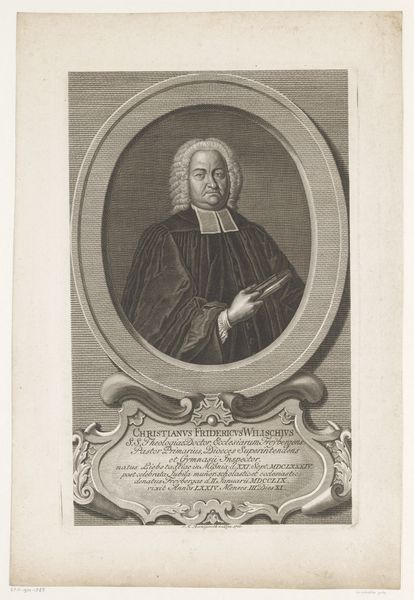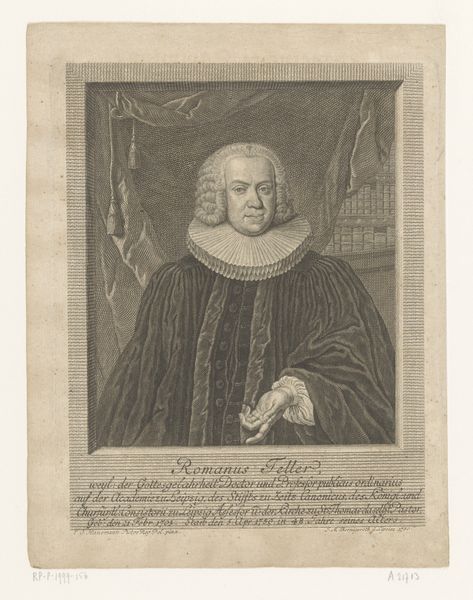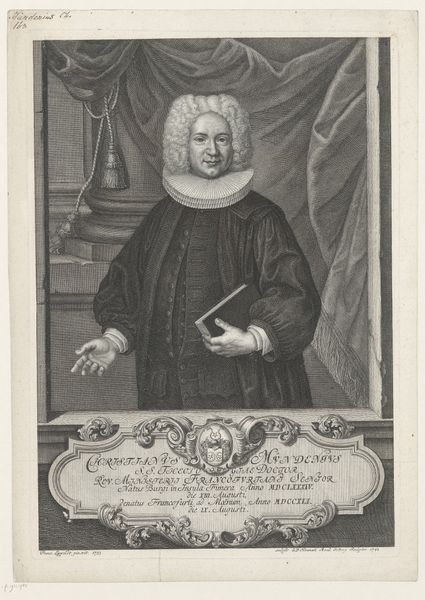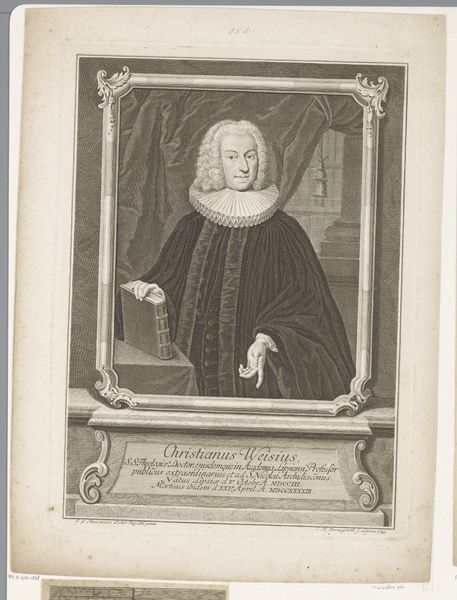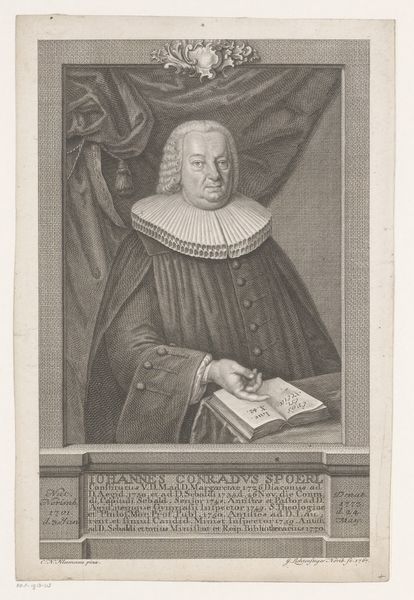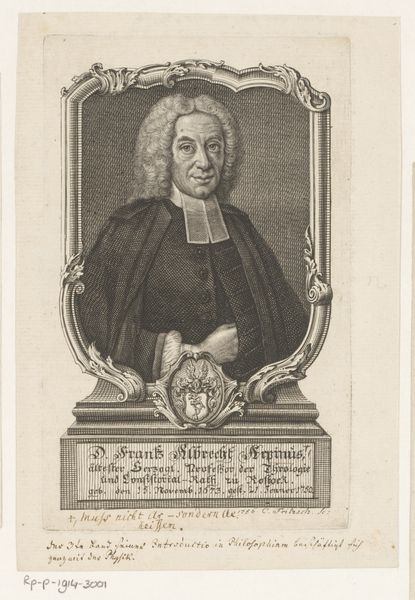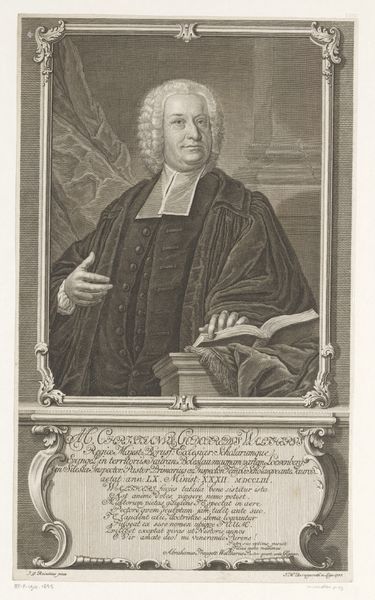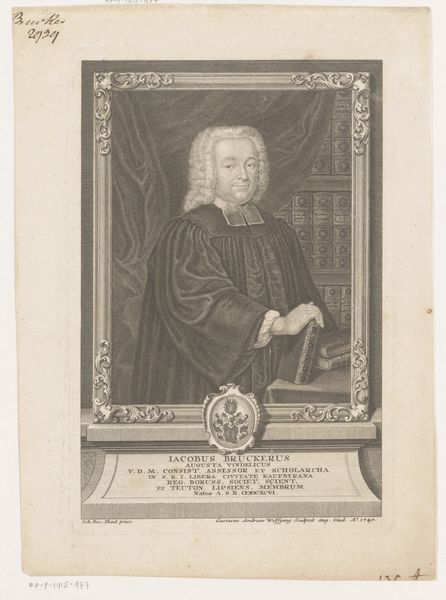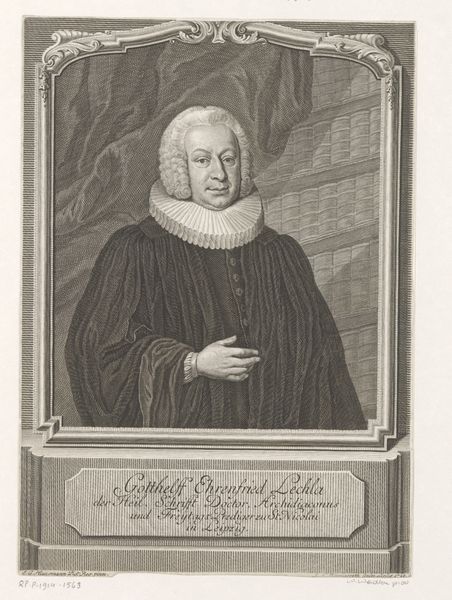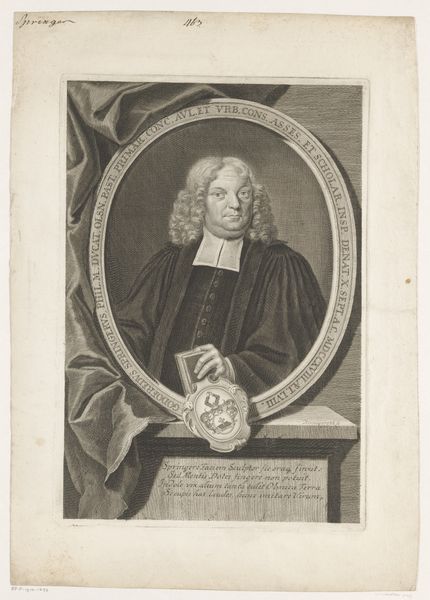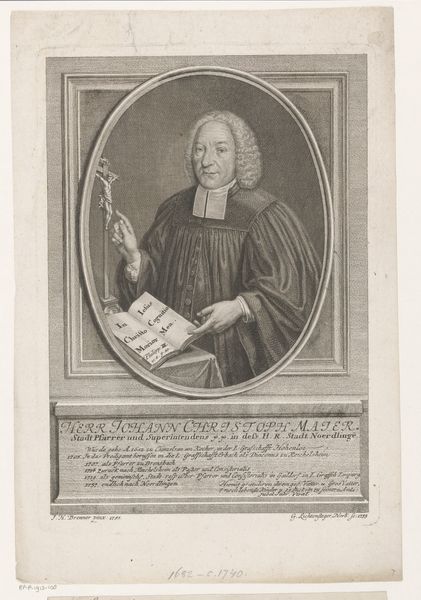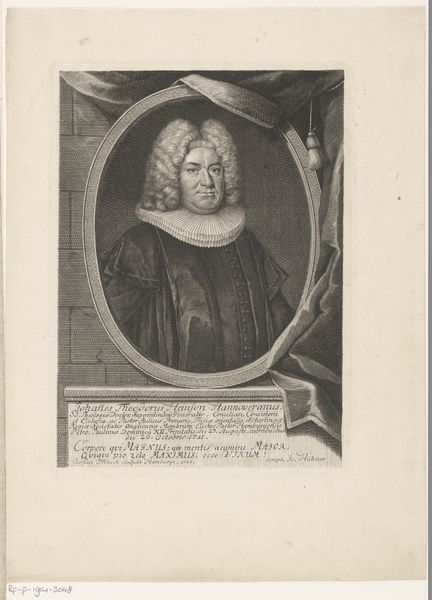
Dimensions: height 197 mm, width 140 mm
Copyright: Rijks Museum: Open Domain
Editor: So, this is Johann Martin Bernigeroth’s "Portret van Jacob Friedrich Krahl," created in 1763. It’s an engraving, so a print. It's quite formal, almost stately in its presentation, especially the elaborate frame. What can you tell me about its context? Curator: This print exemplifies the public role of portraiture in the 18th century. The sitter, likely a man of civic or religious importance given the book he's holding and his garb, is being presented to a wider audience. Consider how prints circulated widely, enabling access to images of prominent individuals to those beyond the elite. Do you think that broad circulation elevated or diminished the status of such individuals? Editor: That's a great question! I hadn’t thought about the distribution of imagery in that way. It feels like in making them accessible, the image could become something of a political symbol. Almost like early forms of propaganda? Curator: Precisely. Consider the context. It's the Baroque period, known for its theatricality and grandeur, often employed by those in power to project authority. This portrait, even in its smaller printed format, echoes that tradition. Notice how the ornate frame around Krahl emphasizes the importance of the image itself. The question is, who controlled this image? Editor: Hmmm, it says underneath the frame, the names "M. Christopherus Keremias Rostiar," and something else ending in '1764'. Are these the ones commissioning it? It feels like more information might have influenced its intent... Curator: Indeed, the production and dissemination of such images was a carefully orchestrated process. Examining patronage networks, printmaking workshops, and the intended audience reveals much about the power dynamics at play. How does that change your view of the image, knowing its wider historical impact? Editor: I see the portrait now not just as an individual likeness but as a product of specific social and political forces, actively participating in shaping public perception. I didn't realize there was so much at play. Thank you! Curator: And I hope this reminds us to consider the role and place of images like these in culture and time.
Comments
No comments
Be the first to comment and join the conversation on the ultimate creative platform.
